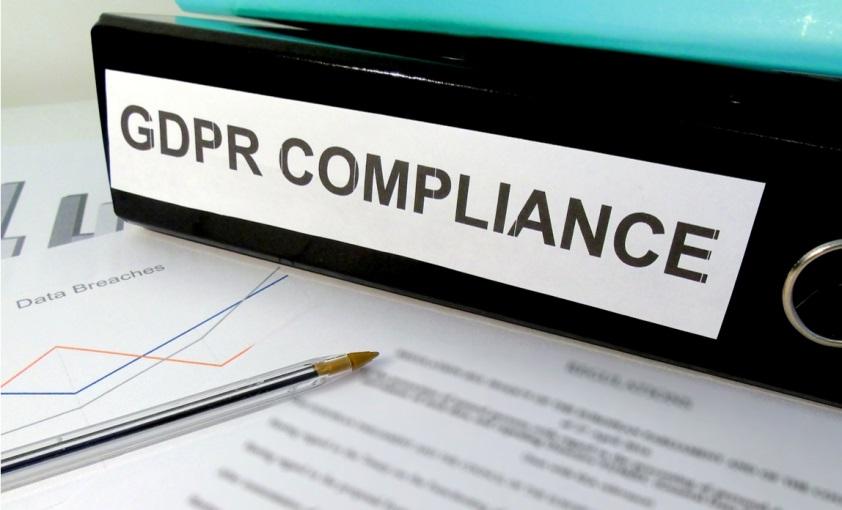Comments
- No comments found

Let's be honest: the Internet has made our lives easier with so many good things.
For example, we can access and find almost anything we want with just a few clicks. But thinking the other way around, it has also made our information available. That's not always a good thing, since data can be prone to abuse. That's why personal information protection has become critical, especially for businesses.
The General Data Protection Regulation (GDPR), a set of rules UK businesses have to obey, applies in the United Kingdom. It was imposed by the European Union (EU) and is enforced for data processing activities by companies all over the world that work with the personal information of EU residents. Also, GDPR compliance in the UK means using the highest standards in personal data protection and privacy as far as currently available compliance systems go.
For you as a customer, GDPR means you can have more control over how companies use your information. It also gives you peace of mind to know that companies use your data fairly and discreetly.
GDPR is a kind of openly written law that sets limits and requirements to protect personal information. Think of it as the barrier to secure your sensitive data received from business and governmental companies or agencies. These rules always have effects since they apply some critical principles for general data protection.
For starters, GDPR reduces information requests to what is necessary (data minimization). In other words, it forces companies to collect only the details about you they really need and nothing else. Next, it imposes purpose limitation, which means that companies can use your details for the reasons they told you about when they collected them. Finally, all businesses collecting your data are responsible for its safety.
Liability, responsibility, and accountability mean companies must obey these rules and keep users' information safe. While these guidelines run in tandem, the purpose is always to ensure that what is private respects privacy and what is yours is no one else. That's why companies take the following steps:
After having a general idea of the GDPR, the next thing you might be interested in is how companies use it to work. You know they already collect your information in different ways, like every time you agree to their ToS, subscribe to their e-mails, or make a make a purchase on their websites.
So, the first step companies take in evaluating how to achieve data privacy is knowing how they gather, store, and use your information. They collect such information as your name, address, or a list of things you might put in a cart and leave for later. They make a detailed "inventory" to know what they have about you, why they need those details, and who else may collect them.
Sure, companies in the UK and all around the world "track" you, but only to understand and know where your information is going and who has access to it. It helps them spot potential risks within their systems or parts so they can fix them.
This way, they prevent your information from being stolen or abused by hackers. Thus, monitoring these activities is like a safety check, allowing your data to stay private and only in the place where you already gave it.

The next step requires that companies take care of the data they possess and where they'll use it. They need to ensure this input is as safe as possible. It's like having a chest with treasure (your information), and the encryption is the lock that keeps it hidden from thieves.
More on how businesses use your information see below:
https://www.businessnewsdaily.com/10625-businesses-collecting-data.html
Luckily, the Internet security approach has undergone major changes for the better. It has gone a long way from simple lock-and-key protection to specialized tools and techniques that elevate protection levels sky-high. Among the substantial resources, encryption is one of the most essential means to scramble your data and ensure only authorized people can read it.
Authorized people use one more method to protect users' data, known as the pseudonymizing technique. It replaces all the specific and personal information with false and non-defining elements to not disclose who you are. Also, companies regularly test their systems for weak spots to improve their cyber security and stay one step ahead of any potential threats.
Once companies have information about you, they can use it, but only in the way you've agreed to. Just imagine your data as something valuable, something you share with a heavy heart. Companies need your permission, or consent, to use it since they can't just take it without asking.
So, organizations have to clearly explain what they want to do with your data and ask if you're okay with it. It's like asking for your permission before borrowing something valuable. But it's not just about getting permission; it's also about respecting your wishes. If you ever change your mind or want your data back, you have the right to ask.
In that case, companies have to listen and give you back your information or stop using it if you ask them to. GDPR compliance emphasizes that there's no other way around for them; they must obey your request this time. And since they must ask for your consent every time and manage your requests, they show how much they value your privacy and are committed to keeping your data safe and sound.
Developing the GDPR compliance framework has almost the same procedure as establishing the lines of a business plan to ensure that a company follows all the regulations. The central part of the framework is all the mandatory policies, internal procedures, and policies showing the GDPR requirements.
This framework is a guideline that clearly indicates all the specific details that must be executed to secure sensitive information in the right way. Within it, the Data Protection Officer (DPO) must offer guidance on compliance and solve any problems associated with it.
Businesses that opt for a GDPR compliance framework show they'll adhere to the protection of customers’ data and do their best to develop trust in consumers. It ensures proper information handling, safety risk mitigation, and all the requirements put in place by the GDPR. And just like every company that takes care of customers, businesses doing this instill trust and keep their reputation shining bright.

It's not the organization that takes care of your privacy, but the people who work for it. So training and raising awareness about data safety among employees are undoubtedly crucial to establishing GDPR compliance.
Everyone must be clear about the GDPR principles and rules they must comply with. Staff training covers the importance of data protection, that is, what constitutes personal information, and handling safety procedures in case of any problem.
Employees learn how to make use of the recommended practices in case of breaches (more details find here) or any external security thread that poses a risk to customers' information. So this training is like a guidebook for them, providing them with the knowledge and skills to fulfill their responsibilities in protecting sensitive information.
Besides teaching employees to safeguard information, companies must cultivate a culture of awareness. It happens when each staff member knows and understands their roles and accountability regarding information protection. And since they work as a team and are in tune with GDPR, their ultimate goal is the utmost customer data safety in every regard.
Companies in the UK achieve GDPR compliance when they raise awareness, apply robust measures, and create a strong corporate culture. It's not just a matter of the law; this set of rules helps organizations uphold basic safety principles, lower any breach risk, and develop credibility among customers.
Leave your comments
Post comment as a guest